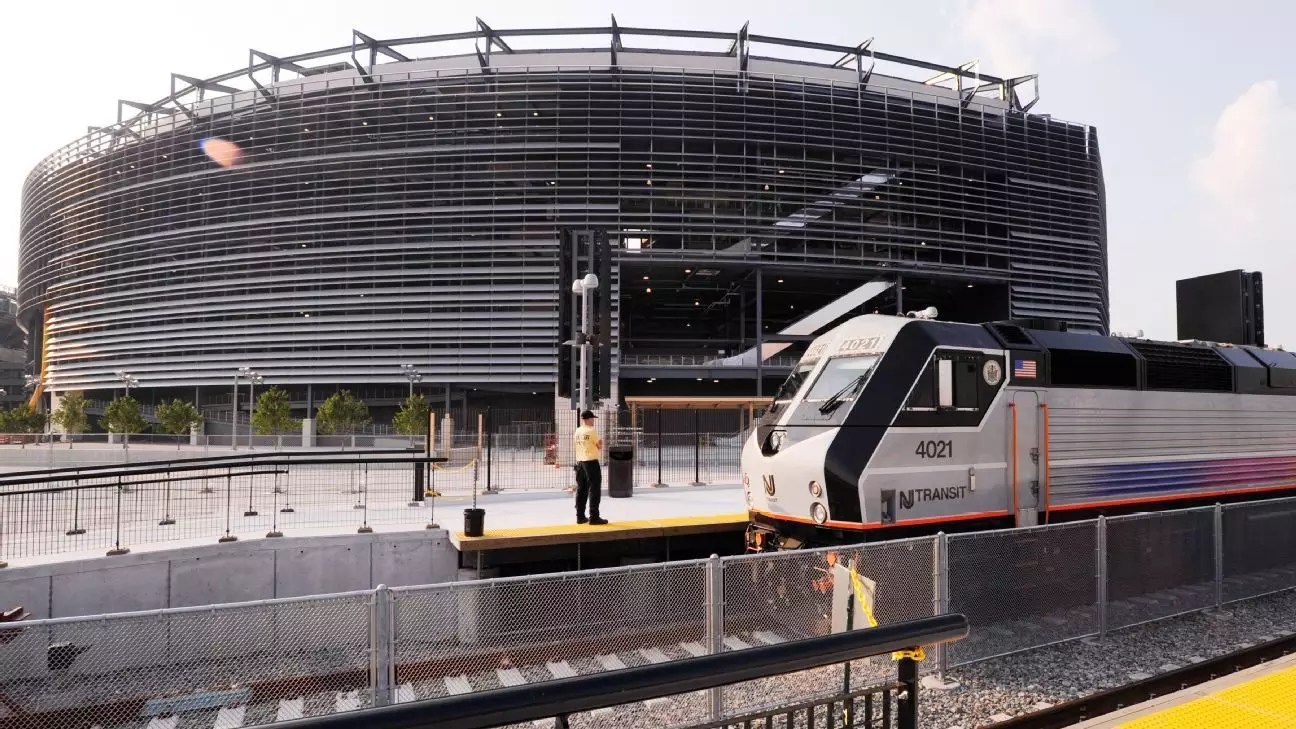As the countdown to the 2026 FIFA World Cup begins, the cities of Boston, New York/New Jersey, and Philadelphia are strategizing to present themselves as a unified megasite for an influx of visitors. The game plan hinges heavily on the capacities of Amtrak, with experts sounding alarms about the federal rail system’s current reliability. While anticipated to draw 6.5 million attendees across the U.S., Mexico, and Canada, concerns are mounting about whether Amtrak can maintain adequate service during a peak surge in ridership. This situation poses a significant dilemma not just for rail advocates and transportation officials but also for millions who will look to Amtrak for their travel needs.
With millions of global football fans flocking to the Northeast Corridor, it’s clear that Amtrak faces a monumental challenge. Jim Mathews, President and CEO of the Rail Passengers Association, highlights how adding extra people could potentially “crush capacity.” Already wrestling with complaints of overcrowded trains, slow journeys, and delays, Amtrak’s reliability has been questionable at best. Alarmingly, a recent report indicated that nearly 10 percent of trains were late, canceled, or terminated, raising questions about the soundness of their operational strategies.
The Dilemma of Infrastructure
The Northeast Corridor is an aging behemoth, with many of its critical components—tunnels, bridges, and electrification systems—relics of a bygone era, some more than a century old. Despite Amtrak’s administrative powers, including infrastructure maintenance and operations along the corridor, persistent issues continue to plague them. High-profile disruptions, including equipment failures and power outages, have only intensified scrutiny on how capable Amtrak will be when the World Cup arrives.
While local organizers express confidence in Amtrak’s ability to manage the anticipated surge in passenger traffic, any optimism must be tempered by the realities of infrastructure limitations. The U.S. has long neglected modernizing its rail systems, leaving behind a patchwork of outdated technology. The urgency goes beyond just World Cup tourists; the implications extend into the future, as more major events, such as the 2028 Summer Olympics and various Rugby World Cups, loom on the horizon.
Amtrak’s 2021 Infrastructure Investment and Jobs Act funding of $22 billion could hint at a feasible turnaround, but it remains sluggish and well short of addressing immediate needs. The expansion plan for critical areas, dubbed choke points of the system, won’t see completion until 2038, long after the 2026 festivities have ended.
Global Expectations, Local Realities
Despite observed delays and the current rail network’s frazzle, there persists a lingering belief among organizers and stakeholders that Amtrak remains a cornerstone of travel for World Cup attendees. Alex Lasry, CEO of the New York/New Jersey host committee, regards Amtrak as an invaluable partner critical in providing seamless travel for fans. He notes that many visitors accustomed to effective rail services in their home countries may expect the same from the U.S., placing added pressure on Amtrak to deliver.
The success of the World Cup ride for fans will not only hinge on intercity travel between match venues but will also involve tourism to other major cities such as Washington, D.C. and Baltimore. For international visitors, those accustomed to efficient rail systems will find it challenging to reconcile their expectations with the realities of Amtrak’s underperformance.
Given that many fans won’t consider travel until the FIFA draw reveals who will be playing where, it leaves an unsettling uncertainty. Stakeholders must recognize and prepare for fluctuating demands as they grapple with establishing systems meant to accommodate an unprecedented level of service.
Operational Overhauls and Upgrades
In response, Amtrak is actively pursuing strategies to address the pressing issues head-on. Plans for lengthening and increasing the frequency of train services aim to bolster capacity, which is critically necessary. The introduction of high-capacity “NextGen” Acela trains promises a new fleet that increases seats per train by 37%. These improvements could significantly enhance travel logistics during the World Cup, but their delivery and deployment remain uncertain.
Nonetheless, initial steps have been encouraging. Amtrak recently scheduled more inspections and has made tangible upgrades in their infrastructure in anticipation of summer demands. Observing this proactive attitude is encouraging but doesn’t erase the enduring concerns stemming from years of underfunding and political maneuvering.
As global fans prepare to descend upon the U.S. for a celebration of sport and festivity, how well Amtrak can rise to the occasion remains an open question. For cities aiming to showcase their hospitality and efficiency, achieving a transportation system that can properly accommodate the influx is critical. Therefore, these preparations must evolve into sound practices that enhance service reliability and customer satisfaction, not just for tourists but for everyday commuters navigating the same crowded routes.
Amtrak stands at a crossroads, one that requires decisive and innovative solutions to transform it from a troubled network into a reliable service – one that echoes the admiration the world has for America’s sporting events. However, merely wishing for change will not suffice; it requires astute planning, strategic foresight, and a genuine commitment to modernizing the rail experience.


Leave a Reply